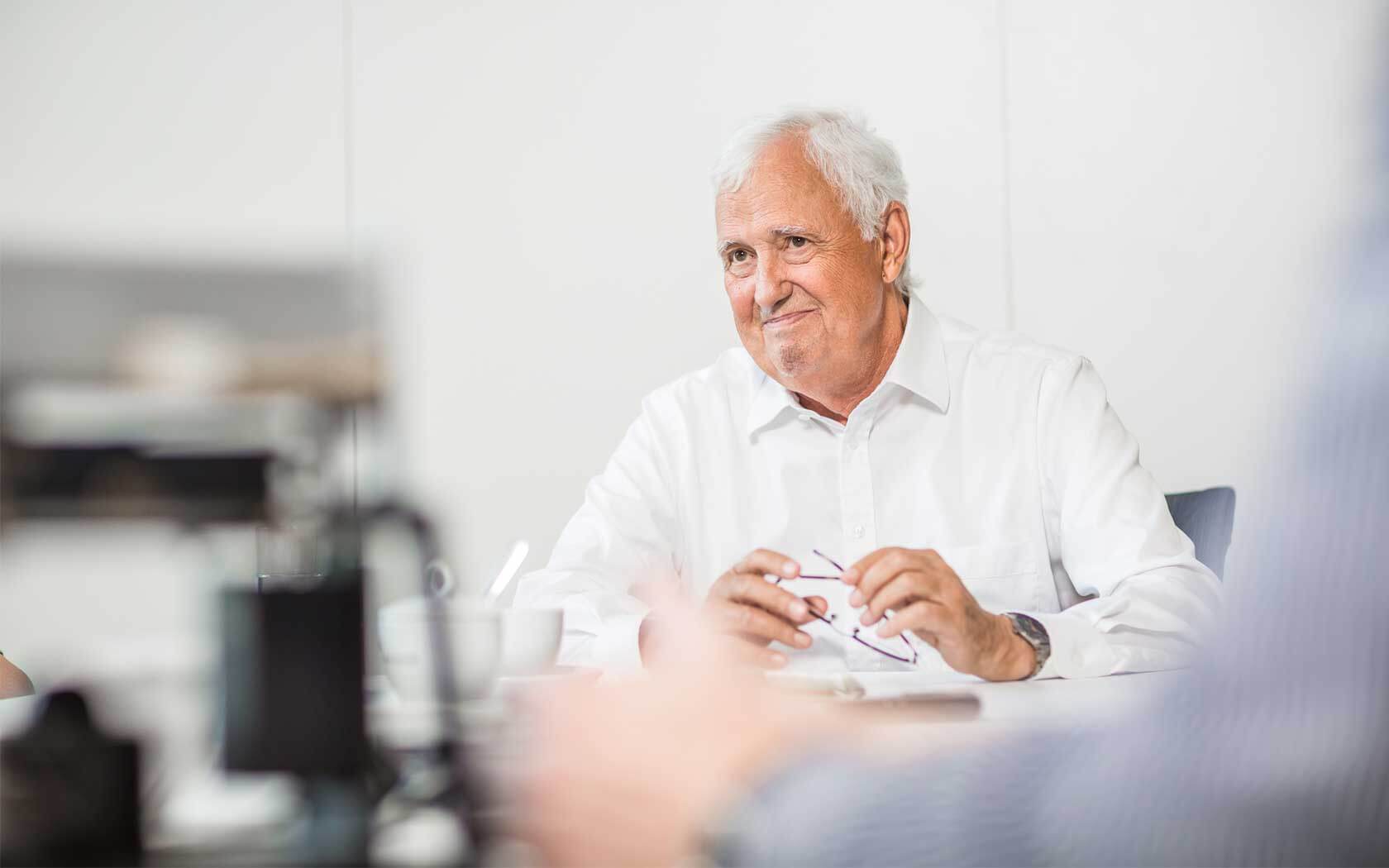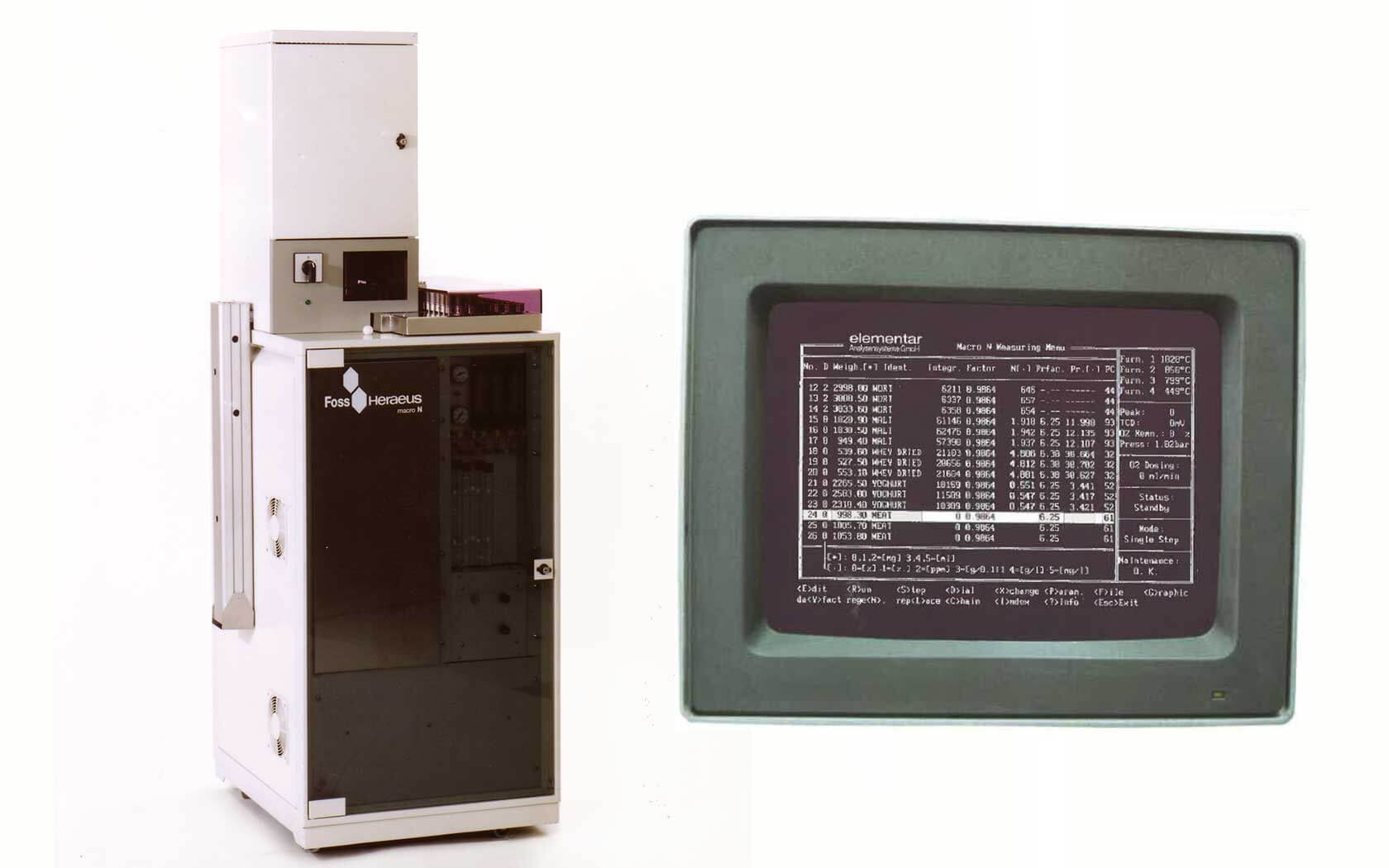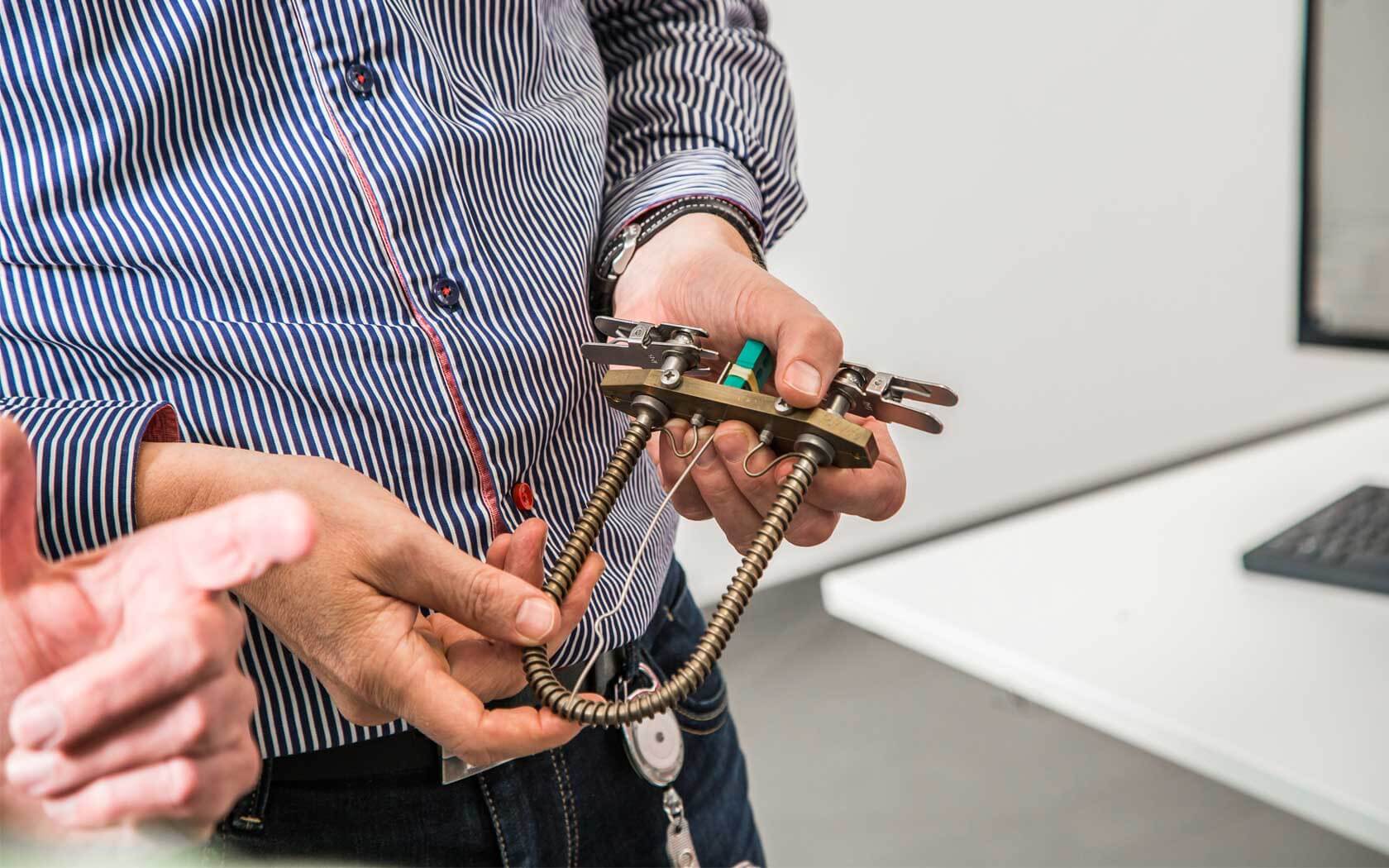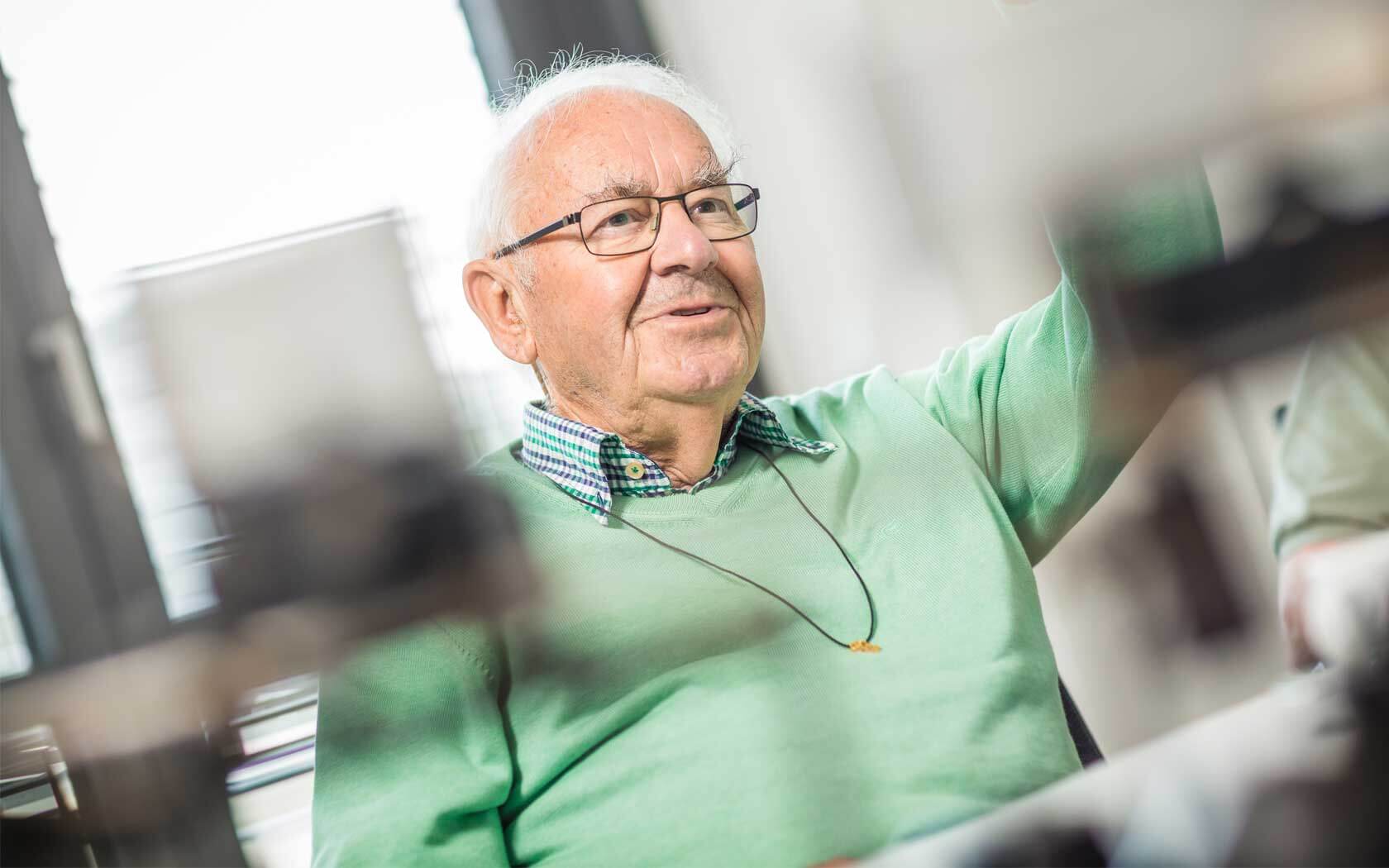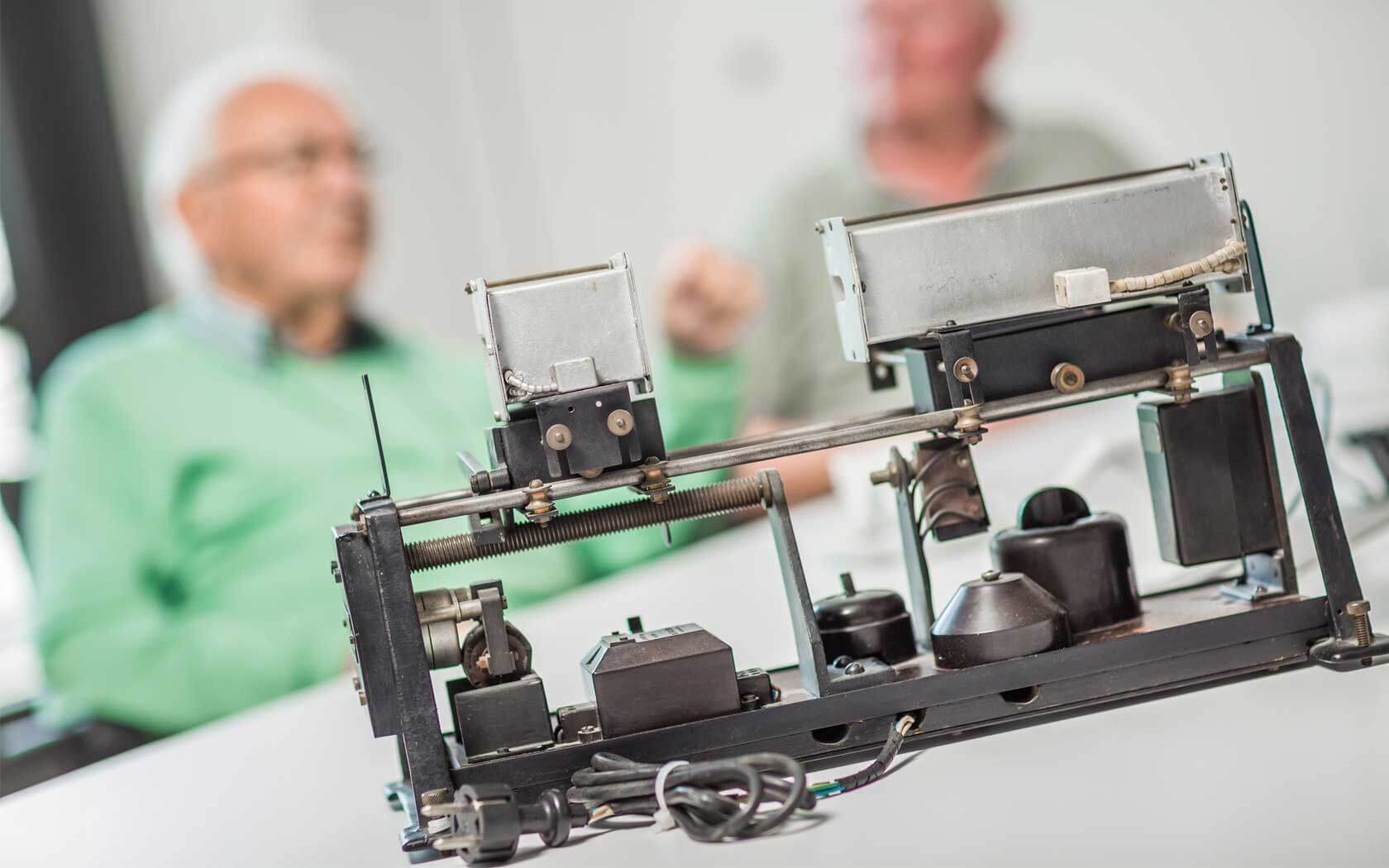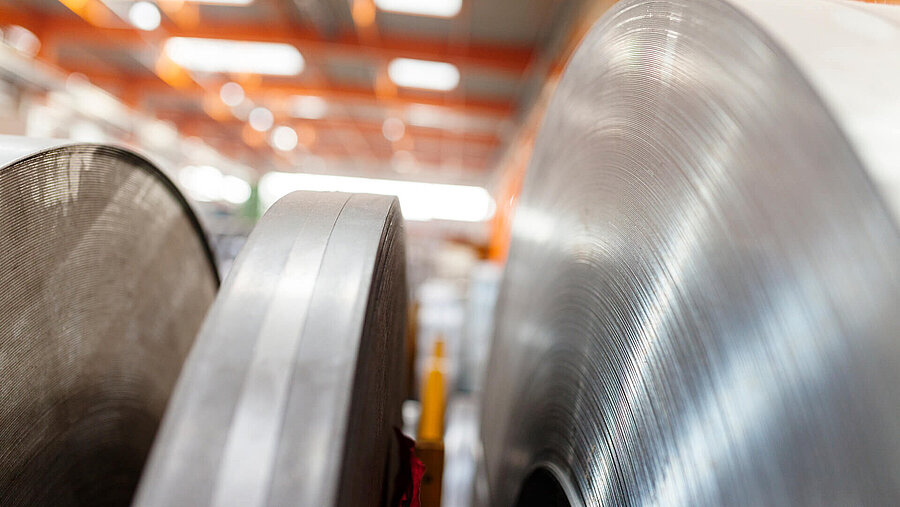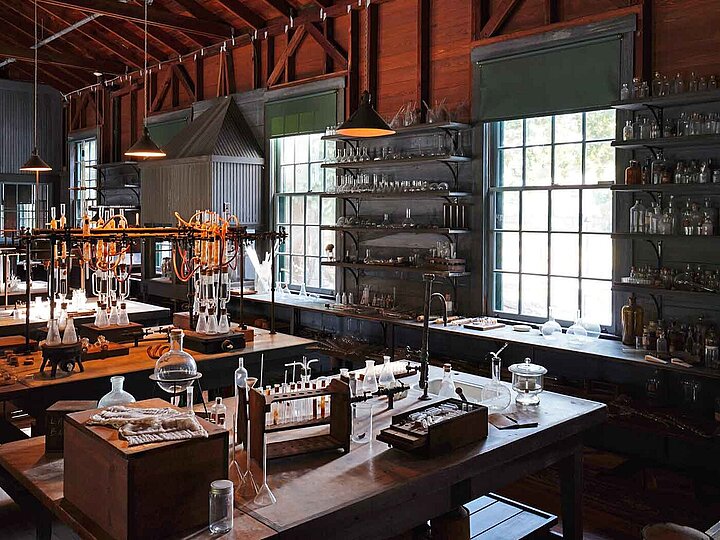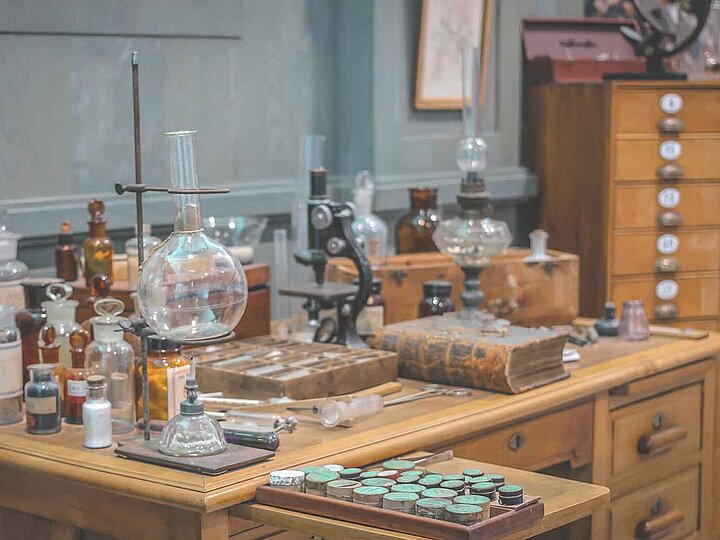Nothing was better in the past, everything was just different

On the occasion of the 125th anniversary of instrumental elemental analysis, I wanted to talk to three people who have fundamentally shaped Elementar and the entire instrumental elemental analysis industry for decades. These individuals have developed the analytical tools that scientists and laboratories around the world know and use. Together with Dr Hans-Peter Sieper, owner and long-time managing director of Elementar, Mr. Hans Kreutzer, long-time product manager for elemental analytical instruments at Heraeus, and Mr. Hans-Joachim Kupka, long-time head of method development at Elementar, I look back. Because I want to know: How has elemental analysis developed over the past decades? What do these personalities like to remember? And: Was everything better in the past? Mr. Kreutzer has a clear answer to the last question: "Nothing was better in the past, everything was just different."
The "electric typewriter" makes its way into analytics
Dr Hans-Peter Sieper has experienced quite a lot in his rich career in the world of analytical chemistry. He led Elementar into independence, and contact with many customers around the world was naturally part of his daily business. Listening to the needs of users is, after all, fundamentally important. During discussions in laboratories on all continents, you usually meet very interested users who also want to advance our technology with good ideas. From time to time, however, you are also confronted with, shall I say, "interesting" questions.
When asked about the most curious experiences in Elementar's history, Dr Hans-Peter Sieper recalls the following incident:
Transcript & translation
Dr Hans-Peter Sieper
"The most curious ones, of course it's always difficult to pick out that extreme. I can think of a good example in this context, because it also plays a direct role in an important development stage of our instruments and therefore of our company, and that is the introduction of the computer - the PC - into our instrument technology. In the past, these instruments were mostly relatively manual, I would say. Both the operation and the evaluation. That changed at the end of the 80s with the development of the macro N - I am sure there are some of you listening who remember that instrument."
Dr Lutz Lange
"macro N was the first instrument with crucible technology."
Dr Hans-Peter Sieper
"macro N - the world's first macro nitrogen analyzer - was capable of analyzing samples up to 3 grams. And what people tend to forget is that this was the first time that all instrument control and analysis was done by a commercially available desktop computer. We even made recommendations on what to use, because customers tended to use the cheapest product from the supermarket. And that, of course, was not adequate.
And the difficult thing was that these were people who were confronted with the machines, some of whom had never had contact with a computer before. They asked us what the "electric typewriter" that came with the instrument was for and said they had no real use for it. There were also others in the former Eastern Bloc who were excited to get the latest PC technology and sometimes ordered the instruments because the computer was next to it, and in that respect it was very important for our company's sales."
Excursus: macro N for large sample weights
When it was introduced in 1989, the macro N was the first nitrogen and protein analyzer explicitly designed for the analysis of macro samples. With its gripper arm for holding the sample crucibles, the automatic sample tray and a PC as the control and evaluation unit, the analyzer already featured a high degree of automation. Even today, users of the successor model rapid MAX N exceed benefit from the achievements that made their way into instrumental elemental analysis more than 30 years ago.
With heart and soul
As head of method development, Hans-Joachim Kupka was substantially involved in the development of several measuring methods. He is particularly proud of developing the separation techniques that are still used in our elemental analyzers today. He describes what essentially characterized his work at Elementar as follows:
Transcript & translation
Hans-Joachim Kupka
"It was always very varied, it was very exciting. There was also a lot of stress and it was often a working day from 7 AM to 6 PM or even later. I often met with Dr Sieper on Saturday mornings. We still had discussions then.
There were also times when I arrived at 7 AM and Dr Sieper was already in the lab looking at the measurements. Those were the early days when we really had to get going."
Dr Lutz Lange
"Yes, and they all put their heart and soul into it. I think that's still a characteristic here at Elementar, that there are a lot of people who really put their heart and soul into what we're doing here."
Hans-Joachim Kupka
"Yeah, it was always very interesting, it was not a routine activity. There were different difficulties that had to be solved every time a new instrument was designed."
Excursus: Separation of combustion gases
The analytical procedure for elemental analysis can be roughly divided into five steps: sample preparation and feeding, combustion, separation of the combustion gases, their detection, and control and data evaluation via PC. The separation of the combustion gases after the sample has been converted to the gaseous state is crucial for a reliable quantitative determination. The gas mixture leaving the reactors consists of sulfur dioxide and carbon dioxide as well as water vapor and nitrogen. Except for the latter, each gas is specifically and quantitatively reversibly adsorbed in the downstream chromatography columns and successively passed to the detector.
Vertical is the new horizontal
During his time as product manager for elemental analyzers at Heraeus, Hans Kreutzer laid the foundation for today's instrument technology with the innovations he introduced at the time. Mr. Kreutzer moved the previously horizontal combustion furnace to a vertical position - with decisive advantages. Mr. Kreutzer reports:
Transcript & translation
Hans Kreutzer
"And of course what I'm a little bit happy about is that you still have a vertical furnace."
Dr Lutz Lange
"Yes, you developed that back then."
Hans Kreutzer
"Yes, I developed that myself."
Dr Lutz Lange
"You introduced the vertical furnace to elemental analysis. I mean, it's commonplace for us today, but that also had to be developed first. You had to invent it first."
Hans Kreutzer
"Perhaps the most interesting thing was the vertical furnace first introduced in the rapid N, because we were able to get away from the tube furnaces, which took up a lot of space - they were sometimes up to a meter wide - that we could reduce all that to a small box."
Dr Lutz Lange
"And we still benefit from that today."
Hans Kreutzer
"And then we managed with the ball valve that you can run several analyses independently of each other."
Dr Lutz Lange
"The automation of the technology."
Hans Kreutzer
"Yes, the automation. And then we just printed the data with the printer, that's all."
Excursus: The development of the vertical combustion furnace
In traditional instruments, the combustion furnace was oriented horizontally, and sample feeding was usually manual. The development of the vertical combustion tube by Heraeus in the 1960s brought two major advantages: First, the instrument could be built more compactly, thus saving space, and second, gravity facilitated sample feeding. This advantage ultimately also paved the way for the automation of elemental analysis.
You want to know more about the history of elemental analysis?
Our book "125 Years of Instrumental Elemental Analysis - A success story" offers you deep insights into the development of elemental analysis from the very first beginning up to latest trends nowadays. Which pioneers have laid the foundation for elemental analysis with their innovative ideas and research? How has elemental analysis developed from the early stage to an industrial produced technology? What is the technological platform that the method is based on and which applications can be covered? Which role have we as Elementar played in the development of elemental analysis? All these questions are getting answered in the book. Enjoy reading.
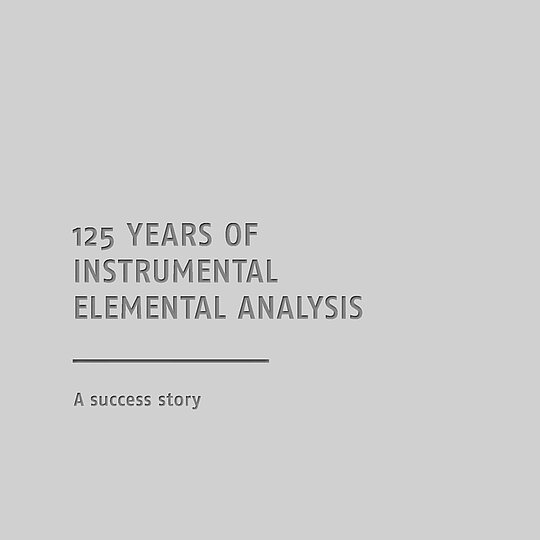
DOWNLOAD YOUR COPY
Fill in the form to receive your download link per e-mail.
Your contractual consideration for the free provision of the download is the subscription to our personalized newsletter. By clicking on the “download now” button, you therefore declare your acceptance of the receipt of personalized newsletters by e-mail by Elementar Analysensysteme GmbH and its group companiesas well as the evaluation of your user behavior in this regard and - if available - the merging of this data with your data in our customer database.
In order to receive newsletters from our group companies, it is necessary to transfer your above-mentioned personal data to these companies. We point out that these are partly located in so-called unsafe third countries outside the EU/EEA, in which no adequate level of data protection (e.g. by adequacy decision of the EU, Art. 45 GDPR) is guaranteed. In these countries, you may not be able to enforce your rights as a data subject, or only to a limited extent. In addition, it is possible that local government agencies access your data to a disproportionate extent. The data transfer is based on Art. 49 para. 1 lit. b) GDPR.
You are aware that the subscription to our personalized newsletter represents the contractual consideration that you provide for the free provision of the download. You can unsubscribe from the newsletter at any time with effect for the future. You can object to the future use of your data for advertising purposes at any time. For further information, please refer to our privacy policy.
Do not miss any new articles
NEWSLETTER
We will constantly publish new blog articles. Register for our newsletter to stay up-to-date and get informed about latest blog articles, news and trends.

